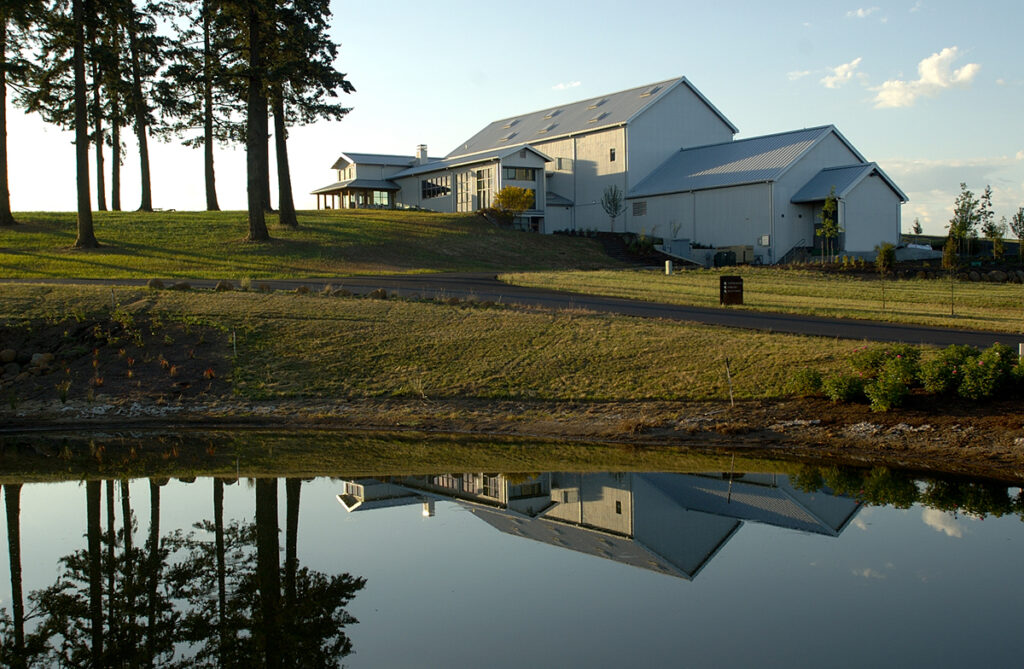
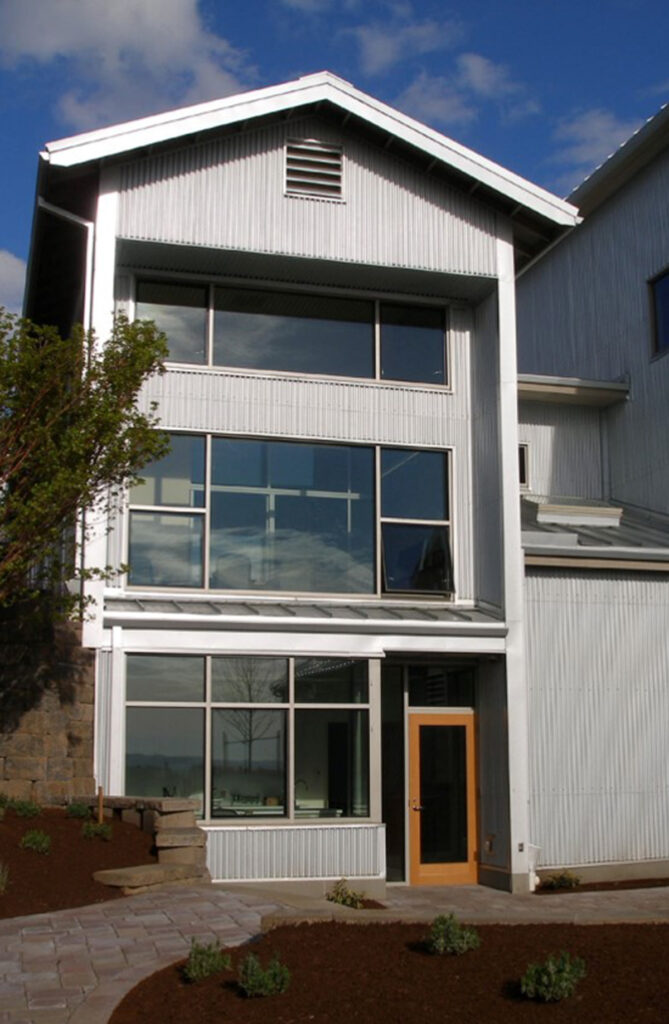
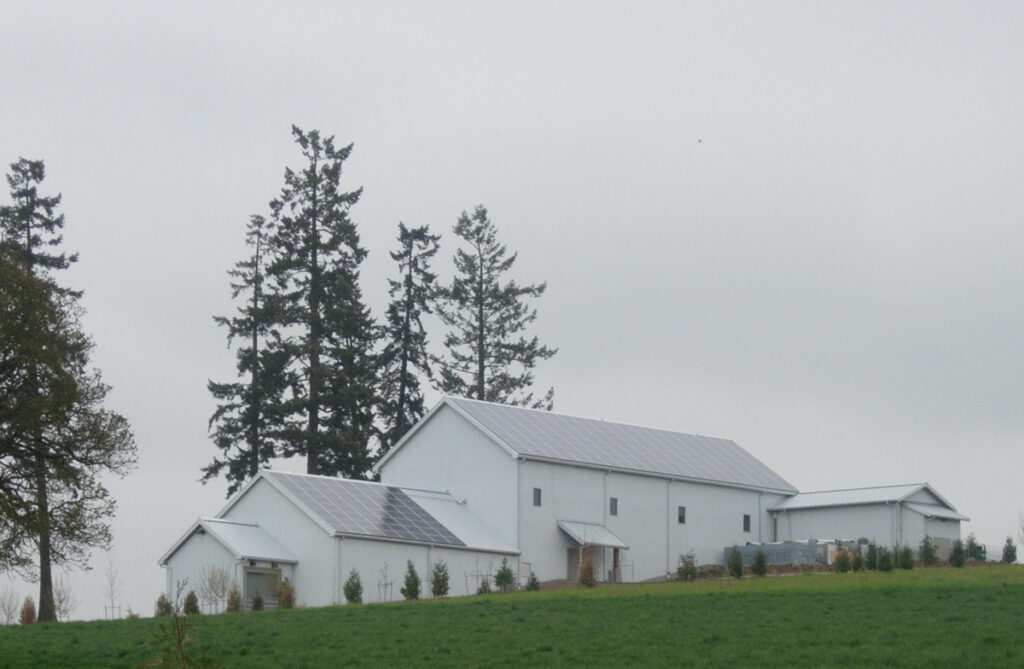
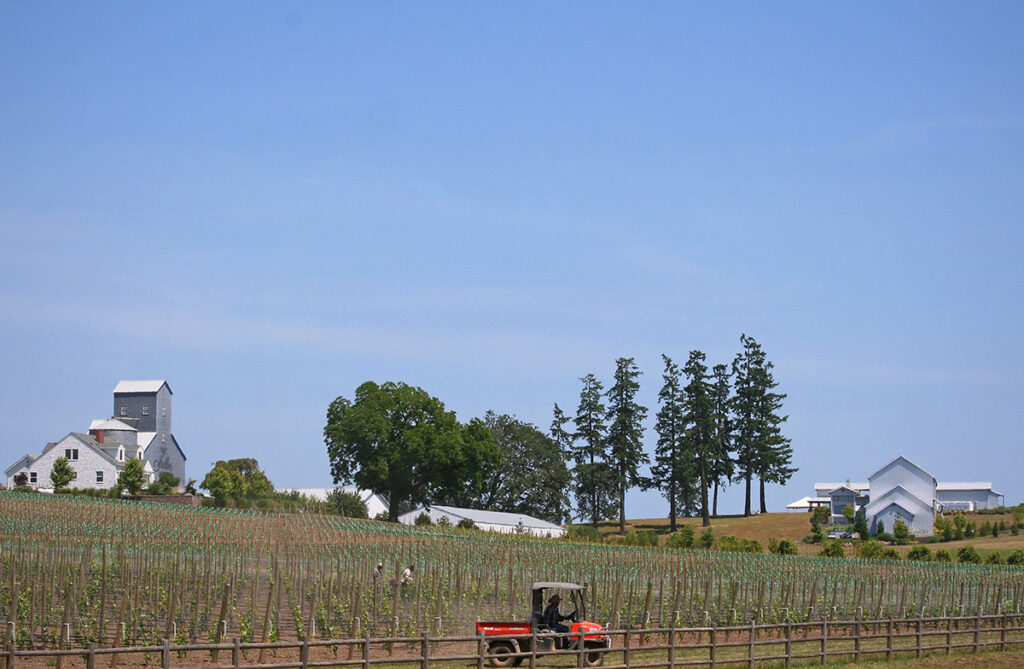

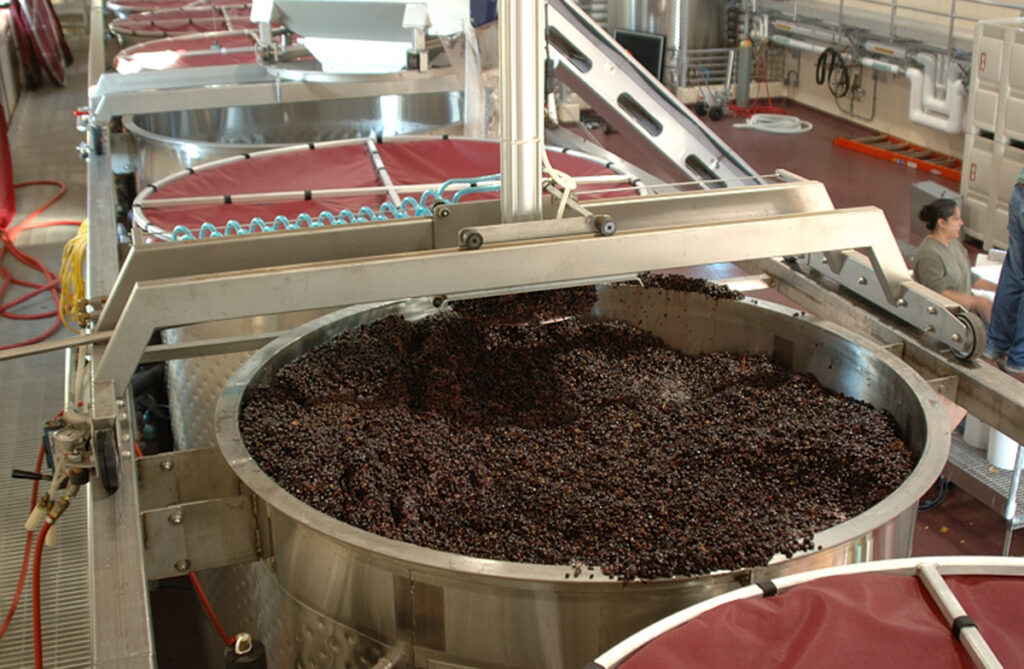






Architect of Record: Ernie Munch
Completed: 2002
Location: Dayton, Oregon
Stoller Winery is an excellent example of what can be accomplished when environmental consciousness, visual aesthetic, and production functionality are given equal emphasis in the design process. The state-of-the-art winemaking facility was designed to be in harmony with its surroundings while integrating functionality with environmental sustainability. As a result, it became the first complete winery in the U.S. to be LEED-certified at the Gold level. Stoller generates 50% of its energy from its photovoltaic arrays. With Bill Stoller’s support, the firm lobbied the Oregon Public Utility Commission and state legislators to adopt net-metering regulations which allow larger commercial solar arrays.
The signature grain elevator on the Stoller property from its previous incarnation as a turkey farm served as an architectural starting point. The new winery was designed as an agrarian building with a high-tech surprise inside.
Sustainability & Resiliency Features: